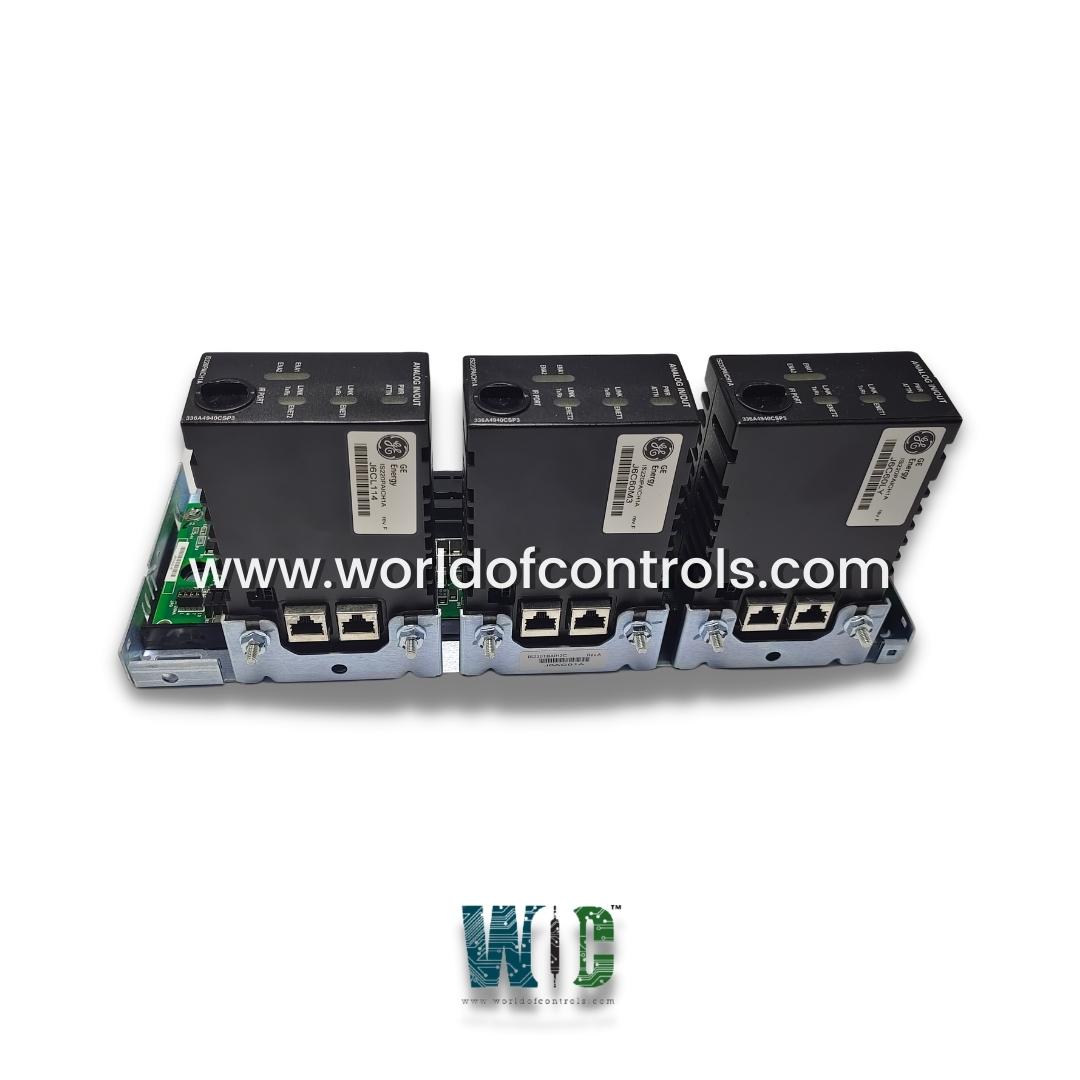SPECIFICATIONS
Part Number: IS230TBAOH2C
Manufacturer: General Electric
Series: Mark VIe
Product Type: Analog Output Terminal Board Module
Analog output current: 0-20 mA
Size: 10.16 cm wide x 33.02 cm high
Temperature: -30 to +65 oC
Repair: 3-7 Day
Availability: In Stock
Weight: 2 lbs
Country of Origin: United States
Functional Description
IS230TBAOH2C is an Analog Output Terminal Board developed by GE. It is a part of Mark VIe control system. The Analog Output Terminal Board (TBAO) is designed to manage and distribute analog signals in industrial control systems, particularly within GE's Mark VIe and Mark VI control systems. It supports 16 analog outputs, each capable of providing a current range from 0 to 20 mA, making it suitable for a wide range of applications that require precise and reliable analog signal transmission.
Features
- The board supports up to 16 individual analog outputs. Each output can deliver a current signal in the range of 0 to 20 mA, which is a common standard in industrial control systems for representing analog variables such as temperature, pressure, or flow rate.
- The current outputs on the board are generated by an I/O processor. This processor can either be local, as in the Mark VIe control system, or remote, as in the Mark VI system. This flexibility allows the board to be used in various configurations, depending on the specific requirements of the control system.
- The board is equipped with noise suppression circuitry, which is essential for maintaining signal integrity. This circuitry protects the analog outputs from surge events and high-frequency noise, which can otherwise lead to signal distortion or loss, thereby ensuring the accuracy and reliability of the output signals.
- Barrier-Type Terminal Blocks Features two barrier-type terminal blocks, which are designed for customer wiring. These terminal blocks provide a secure and reliable means of connecting field devices to the control system, ensuring stable signal transmission and easy maintenance.
- D-Type cable connectors facilitate the connection of the TBAO to other components within the control system, enabling seamless integration and communication between different modules.
- The board is typically used in applications where precise analog output control is required. This includes processes such as modulating control valves, driving actuators, or interfacing with other analog devices that require a 0-20 mA signal. Its design ensures that these outputs remain stable and accurate, even in environments with electrical noise or potential surge events.
Installation
- The TBAO (Analog Output Terminal Board) is securely attached to a vertical mounting plate, which provides stability and optimal space utilization within the control cabinet. This ensures the board is properly aligned for connections and securely fastened to prevent any movement that could disrupt operations.
- The analog outputs are wired directly to two I/O terminal blocks located on the left side of the board. Each terminal block can accommodate two 3.0 mm (#12 AWG) wires with 300 V insulation per point, ensuring safety and compliance with industrial standards. Wires can be terminated using either spade or ring-type lugs, providing a secure connection. Each terminal block is secured with two screws and contains 24 terminals, which facilitates organized and straightforward wiring.
- A shield terminal strip is positioned immediately to the left of each terminal block and is connected to chassis ground. This strip serves as a grounding point for shielded cables, which is essential for reducing electrical noise and ensuring accurate and reliable analog signal transmission.
- The cabling process differs between Mark VI and Mark VIe systems. In Mark VI systems, molded plug cables connect the TBAO’s D-type connectors to the VME rack, where the VAOC processor is located. Simplex systems use two cables, while Triple Modular Redundant (TMR) systems use up to six cables for enhanced reliability. In Mark VIe systems, PAOC I/O packs plug directly into the D-type connectors on the TBAO board. These packs are supported by special side mounting brackets, ensuring a stable and secure connection during operation.
- Overall, the installation of the terminal board involves careful attention to mounting, wiring, shielding, and cabling, all of which are crucial for ensuring the reliability and efficiency of GE's Mark VI and Mark VIe control systems.
World of Controls has the most comprehensive collection of GE Mark VI components. Please contact WOC as soon as possible if you require any extra information.
Frequently Asked Questions
What is IS230TBAOH2C?
It is an Analog Output Terminal Board developed by GE
What is the wiring configuration for the board?
The board features two I/O terminal blocks on the left side. Each terminal block supports two 3.0 mm (12 AWG) wires with 300 V insulation per point, using spade or ring-type lugs for connection. Each block is secured with two screws and includes 24 terminals.
What is the purpose of the shield terminal strip on the board?
The shield terminal strip, located immediately to the left of each terminal block, is connected to chassis ground. It serves as a grounding point for shielded cables, which helps reduce electrical noise and ensures accurate signal transmission.
